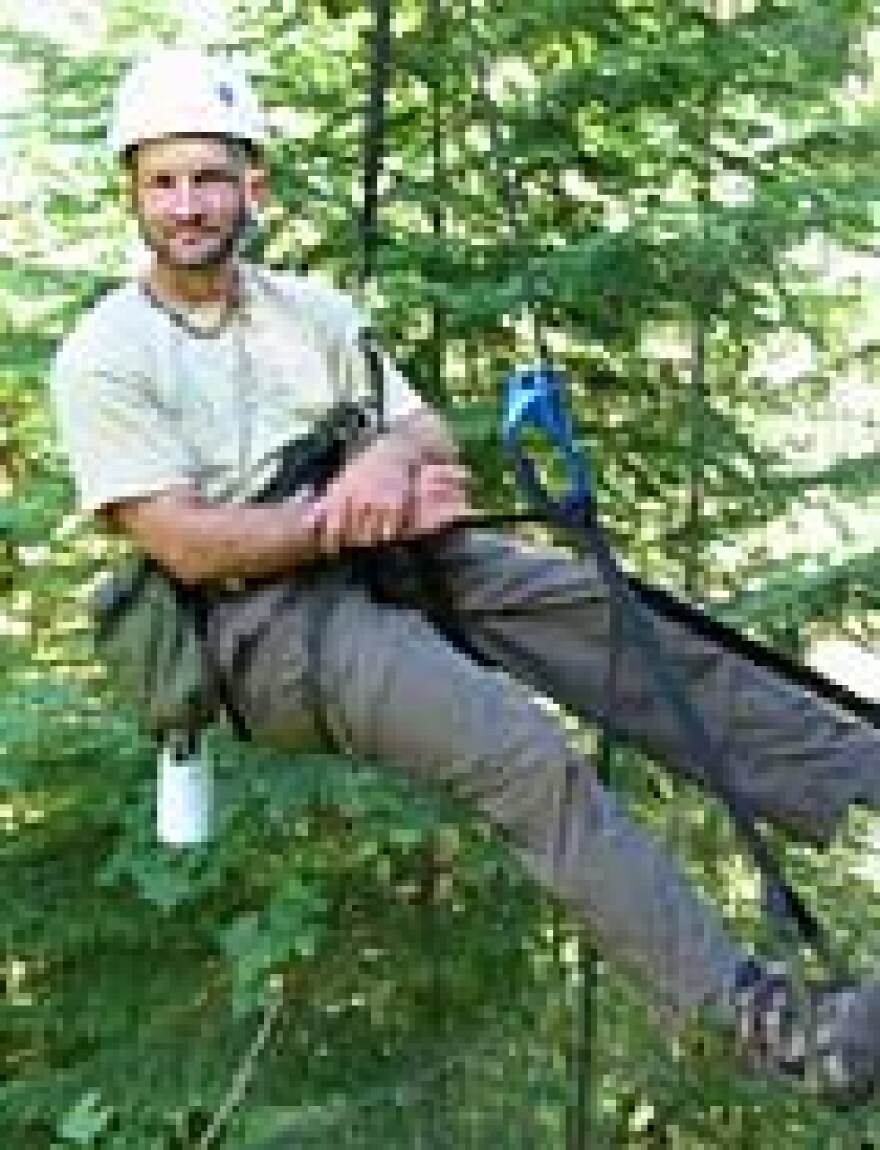
Most of us experience big trees with our necks craned and our eyes skyward as we gaze up into unimaginable terrain. But what if we could explore the ecosystems of treetops, the way we snorkel through coral reefs? A new tree-climbing institute in Oregon wants to provide that experience by taking tourists up into the crowns of immense, old-growth trees. NPR's Ketzel Levine makes the climb.
Levine's guide is Scott Altenhoff, co-founder of the Pacific Tree Climbing Institute, "a man who can ID a conifer, blindfolded, by the smell of its sap," she says. They're equipped with helmets, gloves, harnesses, clips and climbing ropes.
As she begins to ascend a 700-year-old Douglas fir, Levine finds herself spinning out of control: "I am flailing around, and it is not pretty. My heart is in my mouth and I am gasping for air. Scott suggests I sit back and relax. I look down. We have gained four feet."
They eventually make their way up to their "tree boats" -- canvas hammocks some 160 feet up the tree. Levine's "feels more like a ledge than a bed," she says. And this is where she and the few others who've made the climb spend the night.
The Institute's main goal is to increase awareness of the old-growth forests, such as this one, with its fir, hemlock and big leaf maple trees. But Altenhoff is concerned that an increased public interest in climbing may cause environmental damage, and climbers are encouraged to keep their feet off the trees as much as possible to minimize the impact.
"One of my greatest fears is that this will become my own personal Frankenstein monster -- that I helped promote an activity that will turn into people loving trees to death, trampling the root systems or the fragile organisms within the canopy," Altenhoff says. "However, I think the good that can come from getting people to understand and appreciate the forest canopy far outweighs the potential for harm."
Copyright 2022 NPR. To see more, visit https://www.npr.org.


